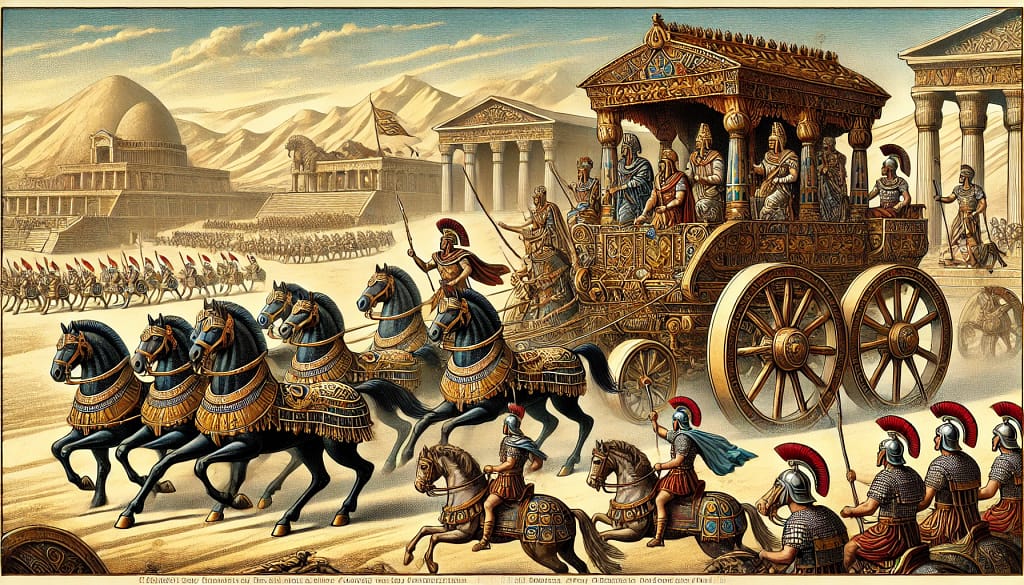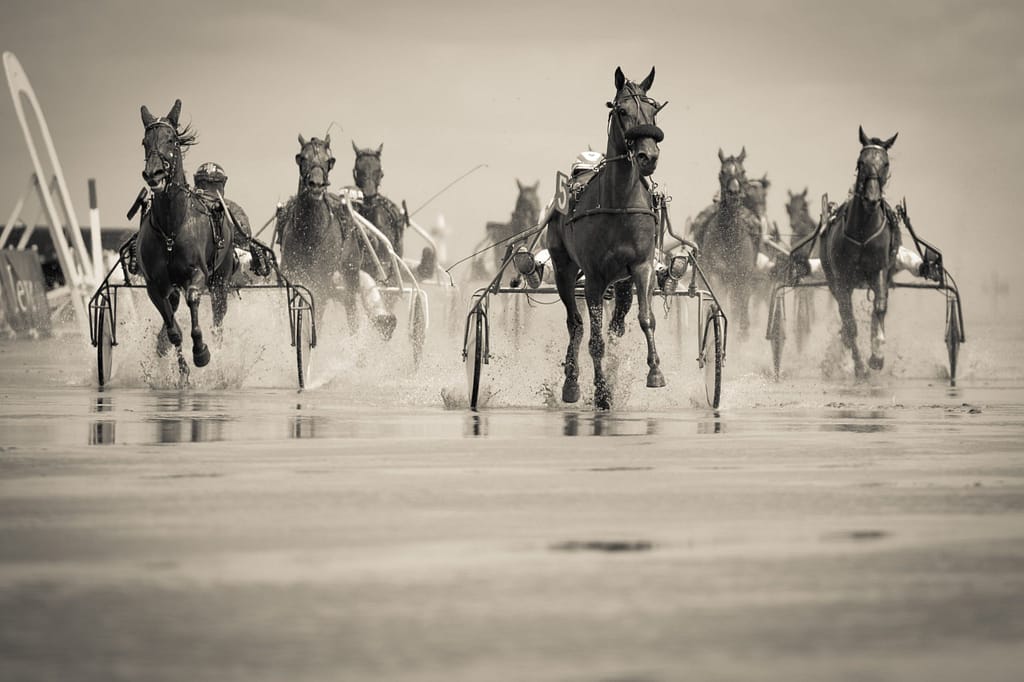
The Role of Horses in Ancient Civilizations
As civilizations evolved, so did the role of the horse. From symbols of power and prestige in ancient Egypt to indispensable components of military might in Persia and Rome, horses were integral to the fabric of these early societies. This section examines how horses were revered, utilized, and depicted in various ancient cultures, highlighting their significance in mythology, warfare, and royal iconography.
Ancient Egypt: Chariots and Divinity
In ancient Egypt, horses were initially introduced by the Hyksos during the Second Intermediate Period (c. 1650–1550 BCE). Their arrival marked a transformative era, as horses became closely associated with the elite and the military. The introduction of the chariot revolutionized Egyptian warfare, offering speed and mobility that were previously unattainable. Pharaohs and nobles used chariots in battle, hunting, and ceremonial parades, underscoring their high status.
Horses were also deeply embedded in Egyptian mythology and royal iconography. They were often depicted pulling the sun god Ra across the sky in his chariot, symbolizing their divine connection. Tomb paintings and temple reliefs frequently showcased chariots, emphasizing their importance in both the afterlife and the earthly realm.
Horses in Ancient Egypt on Amazon
Chariots in Ancient Egypt on Amazon
Persia: Masters of Cavalry
The Persian Empire (c. 550–330 BCE) saw horses become central to its military strategy. The Persians were renowned for their cavalry units, which played a crucial role in their expansive campaigns. The elite cavalry, known as the Immortals, were equipped with horses that were bred and trained for battle. These units provided a significant advantage in terms of speed, agility, and the ability to execute complex maneuvers.
Beyond warfare, horses held a significant place in Persian culture and religion. They were revered in Zoroastrianism, the state religion, symbolizing purity and strength. Royal processions and ceremonies often featured horses adorned with lavish decorations, highlighting their esteemed status in Persian society.
Rome: The Backbone of Military Power
In ancient Rome, horses were indispensable to the empire’s military and logistical operations. The Roman cavalry, or equites, were an essential component of the legions, providing crucial support to infantry units. Roman military tactics evolved to incorporate cavalry more effectively, allowing for greater flexibility and reach in campaigns.
Horses were also prominent in Roman public life and entertainment. Chariot racing, held in the Circus Maximus, was one of the most popular spectator sports, drawing massive crowds. Successful charioteers became celebrities, and their horses were often celebrated and commemorated in art and literature.
Horses in ancient roman culture on Amazon
Mythology and Iconography
Across these civilizations, horses were frequently depicted in art and mythology, symbolizing various attributes such as power, freedom, and nobility. In Greek mythology, for instance, horses were associated with gods like Poseidon, the god of the sea and horses, and were central to myths such as that of the winged horse Pegasus.
In royal iconography, horses often symbolized the ruler’s strength and divine favor. Statues and reliefs of kings and emperors on horseback were common, serving as enduring symbols of their authority and prowess.
Horse mythology and iconography on Amazon
Conclusion
The role of horses in ancient civilizations was multifaceted and profound. As essential components of military strategy, symbols of divine and royal power, and subjects of artistic and mythological representation, horses left an indelible mark on the cultures of ancient Egypt, Persia, and Rome. Their legacy continues to resonate, underscoring the timeless bond between humans and horses.
Horses in Ancient Civilisations
Horses in Ancient Egypt on Amazon
Chariots in Ancient Egypt on Amazon
Horses in ancient roman culture on Amazon
Enjoy your equestrian journey! 🏇
Build Your Business and Learn Affiliate Marketing
See you there!
Our Unique Value Propositions
Discover why Chwals GPT is the top choice for equestrians looking
to build their online presence (register for free)
Tailored Equestrian Expertise – Community Connection – Intuitive User Experience



